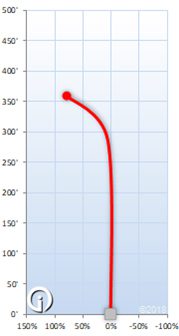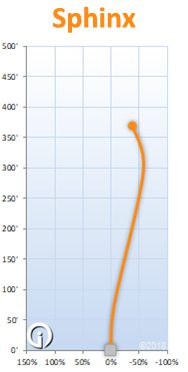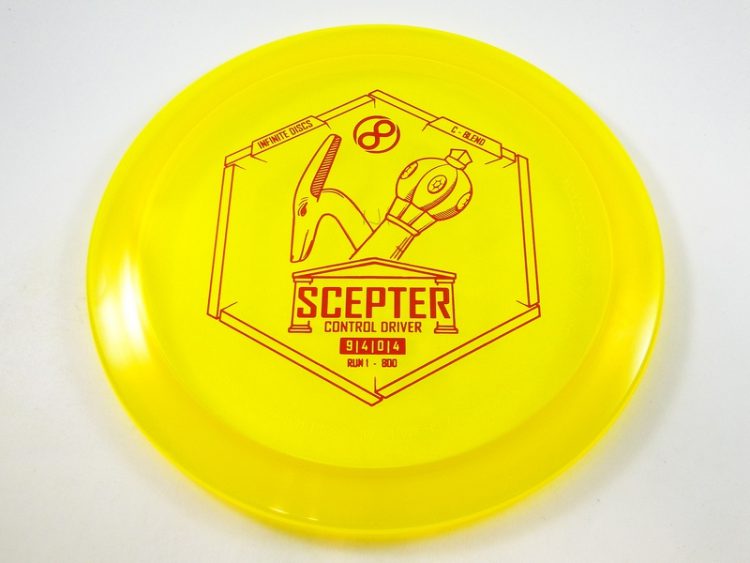Best Distance Drivers 2025

When you want to get the most distance from your drives, you’re usually reaching for your high-speed drivers. Also called distance driver, this type of disc has the widest rim of all types, and the usually require the most skill to maximize the achievable distance. They are the super-athlete of the disc golf world, since they hold distance records, and are used by pros and amateurs alike. Much like our Best Putters, Best Midranges, and Best Fairway Drivers we will look at the sales data to find the best disc golf distance drivers for 2025, and give you some ideas of discs you might want to try.
Before we unveil the top discs according to sales for 2024, let’s roll back the clock to see the top sales for 2023. Then we can compare the numbers and see if there are any changes.
Prior Top 50 Best Disc Golf Distance Drivers
 Taking the top spot for sales is the Innova Wraith.
Taking the top spot for sales is the Innova Wraith.  The Wraith is a speed 11 disc that has a flight similar to some of the other top discs on the list. Taking second is the Infinite Discs Emperor, followed by the most popular driver of all time, the Innova Destroyer.
The Wraith is a speed 11 disc that has a flight similar to some of the other top discs on the list. Taking second is the Infinite Discs Emperor, followed by the most popular driver of all time, the Innova Destroyer.
Checking out the top plastic sales for the number one Wraith we find that the most popular Wraith plastic sold is Star plastic. Star plastic outsold second place Gummy Champion by three times! It was responsible for over a third of all Wraith sales last year. The third place most popular plastic is GStar.

Now let’s look at the top sellers for last year.
Top 50 Best Disc Golf Distance Drivers 2025

The top six discs on our list for 2024 are the exact same as last year. Those six account for nearly one-third of all discs sold. The Axiom Time-Lapse moved up the list, since it only had a few months of sales the year before. However, it still didn’t dethrone the top 6. Infinite and Innova hold all of those top six molds, plus seventh place.
Here are the links to the top 10 discs on the list.
- Innova Wraith
- Infinite Discs Emperor
- Innova Destroyer
- Infinite Discs Pharaoh
- Innova Mamba
- Infinite Discs Maya
- Innova Gorgon
- Infinite Discs Aztec
- Thought Space Athletics Construct
- Innova Tern
- Innova Beast
Check out the top selling drivers HERE
Most Brands In The Top 50
There are twelve different brands who have a disc in the top 50 best discs. Let’s take a look at which brands are represented, and how many molds they have on the list.
Now let’s look at the brands with the most molds for 2024:


There are no changes in the order of the top 5, but the number of molds in that group did have some changes. Innova and Discraft had half of the molds in the top 50. Infinite held the last podium spot, while MVP just missed the cut. Finish Line Discs, Divergent Discs, and Dynamic Discs all had one mold in the top 50
Top Rated Drivers
We’ve looked at the sales data for the top distance drivers, and now we’ll look at the top RATED discs. The infinite discs website allows customers to leave feedback and ratings on discs and accessories, and is a good resource for finding highly rated disc products. Let’s look at some of the distance drivers with the highest ratings.
Highest Rated Distance Drivers
Taking the number one spot with the highest consumer rating for  distance drivers is Infinite Discs’ popular high-speed driver, the Emperor. The speed 12 driver has a popular flight that features a little turn with a reliable solid fade. It is available in numerous plastic types. It is also the signature disc of some of the top pros. The Emperor has a 4.95 rating out of 5. Nearly perfect!
distance drivers is Infinite Discs’ popular high-speed driver, the Emperor. The speed 12 driver has a popular flight that features a little turn with a reliable solid fade. It is available in numerous plastic types. It is also the signature disc of some of the top pros. The Emperor has a 4.95 rating out of 5. Nearly perfect!
Two discs tied for the second place spot, both with an average rating of 4.74 out of five, are the Innova Wraith and the Infinite Discs Pharaoh.
Check out the highest rated distance drivers HERE
Highest Rated Overstable Distance Drivers
Since the Emperor is considered an overstable driver and is the highest rated driver, it is obviously going to be the highest rated overstable driver. Since we talked about the Emperor above, let’s explore the next-best rated disc. In second place with 4.76 stars out of five is Discraft’s Raptor. The popular Raptor is a great disc for headwinds, or when you need a strong fade at the end of its flight. It is also the signature disc of several pros. The third highest rated overstable distance driver is the Innova Wraith, rated at 4.75 out of five.
Check out the top overstable disc golf distance drivers HERE and you can see what’s on sale!
Highest Rated Understable Disc Golf Driver
Looking at the other end of the stability spectrum we  have the highest rated understable drivers. Topping the list are discs from Infinite, Axiom, and Lone Star Disc. The currently highest-rated disc is the Infinite Discs Sphinx. Currently with a 4.85 rating, the Sphinx is a great understable disc that comes in a variety of plastic types. With its understability the Sphinx is capable of giant turnover shots for some crushing drives. Or it can pick up some long distances on the ground as a roller.
have the highest rated understable drivers. Topping the list are discs from Infinite, Axiom, and Lone Star Disc. The currently highest-rated disc is the Infinite Discs Sphinx. Currently with a 4.85 rating, the Sphinx is a great understable disc that comes in a variety of plastic types. With its understability the Sphinx is capable of giant turnover shots for some crushing drives. Or it can pick up some long distances on the ground as a roller.
The next two molds on the understable list, the Axiom Insanity and the Lone Star Disc Mockingbird, are tied at an impressive rating of 4.79.
Check out the top 20 understable disc golf distance drivers HERE and you can see all the top molds and what’s on sale!
Highest Rated Stable & Straight Flying Drivers
Checking out distance drivers with a more neutral flight,  meaning little turn and a less aggressive fade, we find the stable Infinite Discs Dynasty leading the pack for the title of Best Stable Distance Driver with a rating of 4.82. The Dynasty works great for people of all skill levels with its incredible glide.
meaning little turn and a less aggressive fade, we find the stable Infinite Discs Dynasty leading the pack for the title of Best Stable Distance Driver with a rating of 4.82. The Dynasty works great for people of all skill levels with its incredible glide.
Tied for second place with a rating of 4.79 are the popular Discmania Essence, and the workhorse from Infinite, the Centurion.
Check out the top 20 stable disc golf distance drivers HERE and you can see all the top molds and what’s on sale!
Let Us Know About YOUR Favorite Drivers, and You Could WIN!
Those are our lists of the top distance drivers with sales and ratings data. Let’s add to the data by hearing from YOU! Answer one or more of the following questions:
1 – What is your favorite distance driver?
2 – What is your favorite over/understable distance driver?
3 – What do you think will be the best distance driver for next year?
We chose five random commenters to win an Infinite Discs gift card. One comment per person. We approve all comments (to avoid spam) so it may take a day or two before your post appears.
Check out all of the Infinite Discs Giveaways HERE


 and its hard fade as the disc slows down. The ‘turn’ of a disc, for a right-hand back-hand throw (RHBH) is its movement to the right immediately after the disc is thrown. The ‘fade’ is its movement to the left as the disc slows down. As players improve their technique and skill, their ability to throw the disc at high speeds increases. As the speed of the throw increases, so does the need for more overstable discs to prevent the flight from turning too much.
and its hard fade as the disc slows down. The ‘turn’ of a disc, for a right-hand back-hand throw (RHBH) is its movement to the right immediately after the disc is thrown. The ‘fade’ is its movement to the left as the disc slows down. As players improve their technique and skill, their ability to throw the disc at high speeds increases. As the speed of the throw increases, so does the need for more overstable discs to prevent the flight from turning too much. Now let’s consider the term ‘
Now let’s consider the term ‘
 4. The ‘0, 4’ are the last two numbers, and tell you that this mold would resist turning, even at high speeds (the 0), and will finish strong to the left (the 4). It is an example of an overstable fairway driver.
4. The ‘0, 4’ are the last two numbers, and tell you that this mold would resist turning, even at high speeds (the 0), and will finish strong to the left (the 4). It is an example of an overstable fairway driver.